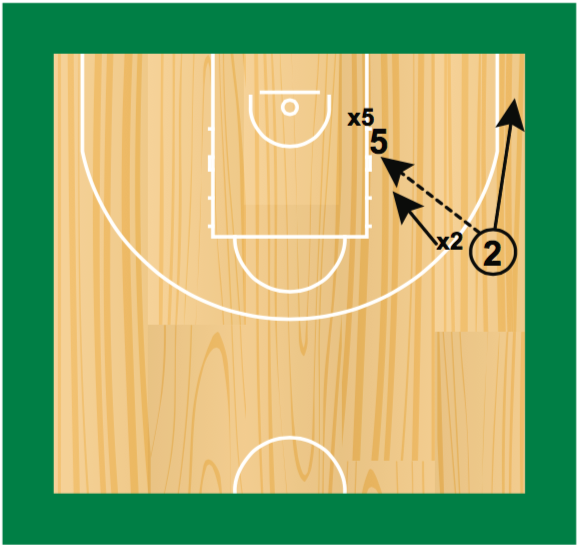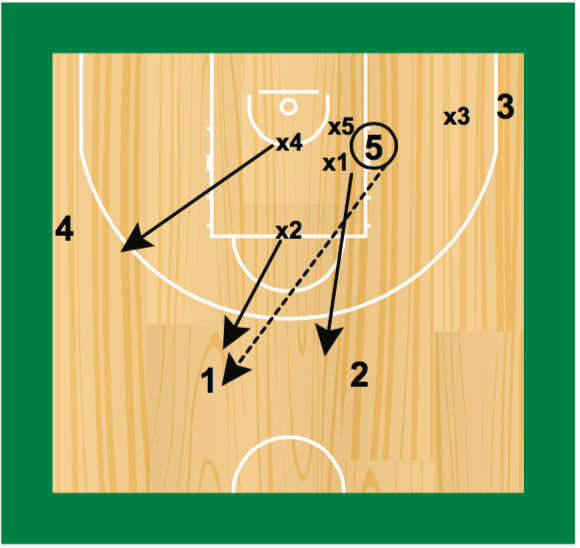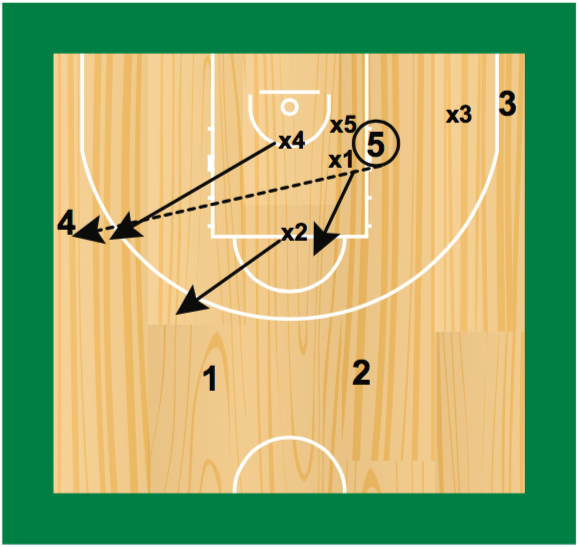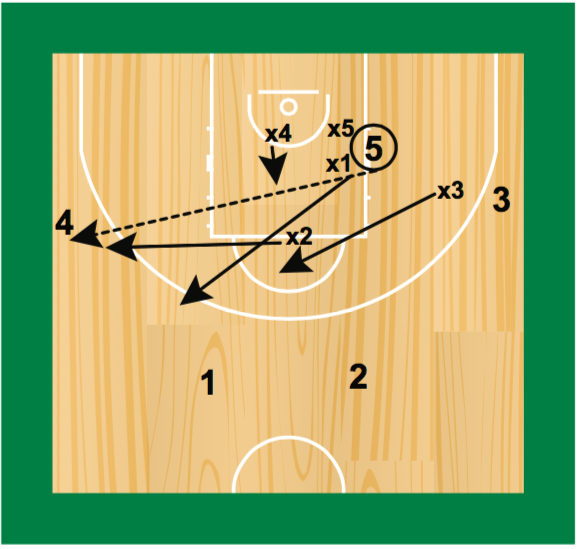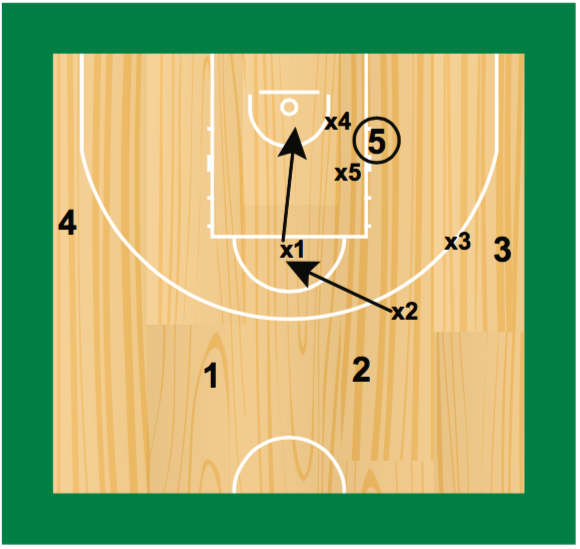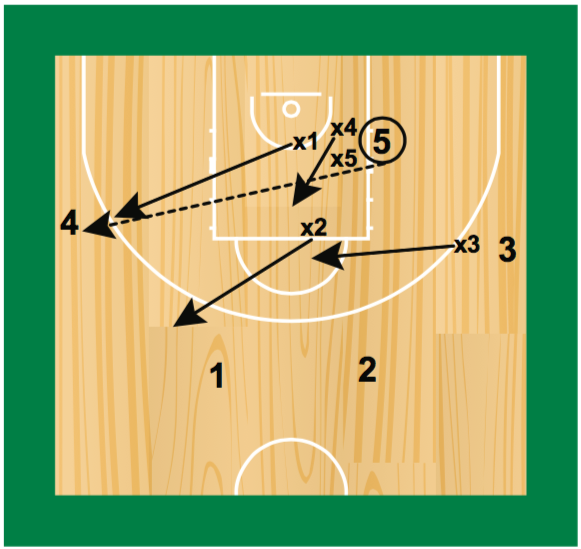Level 3
1.4.2 Double team post players
Basketball is a team sport but there is no doubt that talented individuals can have a significant impact upon the success of a team and it is commonplace for a team to employ specific tactics to reduce the impact of dominant players. Some coaches will adopt specific tactics to defend a dominant player, whilst others may be prepared to concede that the dominant player will score a certain number of points and to focus on limiting the performance of other players. The “Box and 1” defence discussed above is an example of a tactic that might be used against a dominant player.
With junior teams it is probably more effective to highlight particular aspects of an existing defence rather than devise something new to guard a dominant player. Most importantly though, is that the team has time to prepare and practice whatever the coach wants to do.
Double Team Post Players
Often where a team has a dominant post player, the defence may attempt to limit how often the player receives the ball. This can be done by “fronting” the post player so that no pass can be made. Alternatively, coaches may prefer their team to attempt to limit the effectiveness of the post player once they receive the ball.
Crowding the Post Player
When the ball is passed to a low post player, the wing defender may “hedge” toward the post (one or two steps) to reduce the space the post has to play.
This can be particularly effective against a post player that plays facing the basket.
The wing defender remains responsible for defending the wing player and must keep vision of them.
The wing player can go on either side of the post player, and this is influenced by where the post defender is positioned. If the post defender is low, the wing may crowd on the high side (which is the direction the post player may move).
Shown here, the post defender is high, so the wing defender moves low. They should play “butt to the baseline” – with their back facing the baseline to maintain vision of their opponent and the post player.
The option of “crowding” the post player effectively leaves a one on one contest between the post player and their defender. An alternate tactic is to double team the post player once they receive the ball in an effort to force them to pass or take a poor shot option.
Double Team Post
When double teaming the post, x5 takes a position on one side or another of the post player. This defines where the double comes from.
When x5 is on the baseline side, x1 double teams the post player, moving from the high “split line” position.
In double teaming, x1 should keep their hands high – reaching for the ball will often result in a foul.
When the ball is passed to 1, x4 adjusts their position to defend 4. If 4 is a “driver” rather than a “shooter”, x4 may not move to a denial position, but will remain in a position to defend the penetration.
However, having x2 rotate to defend the wing enables more pressure on an outside shot and may be preferred if 4 is a good perimeter shooter.
As x2 rotates to 4, x1 rotates to deny the pass to 1 and x3 rotates into the key to a help position, and is responsible for defending 2. This leaves x4 in the key (and now responsible for defending 3), which can be very effective if 4 is likely to drive, as x4 will be in position to help if necessary.
